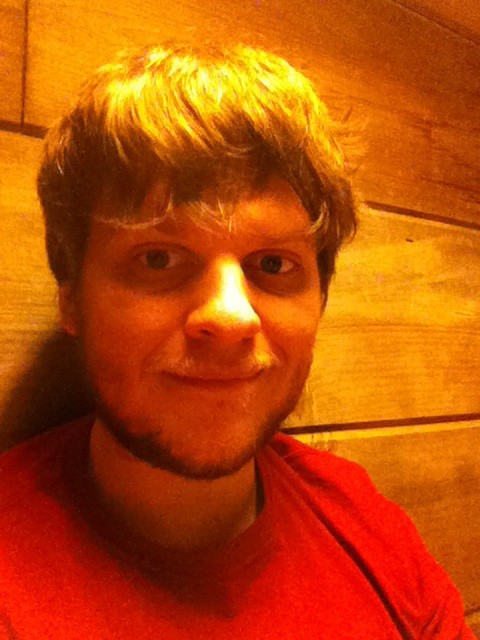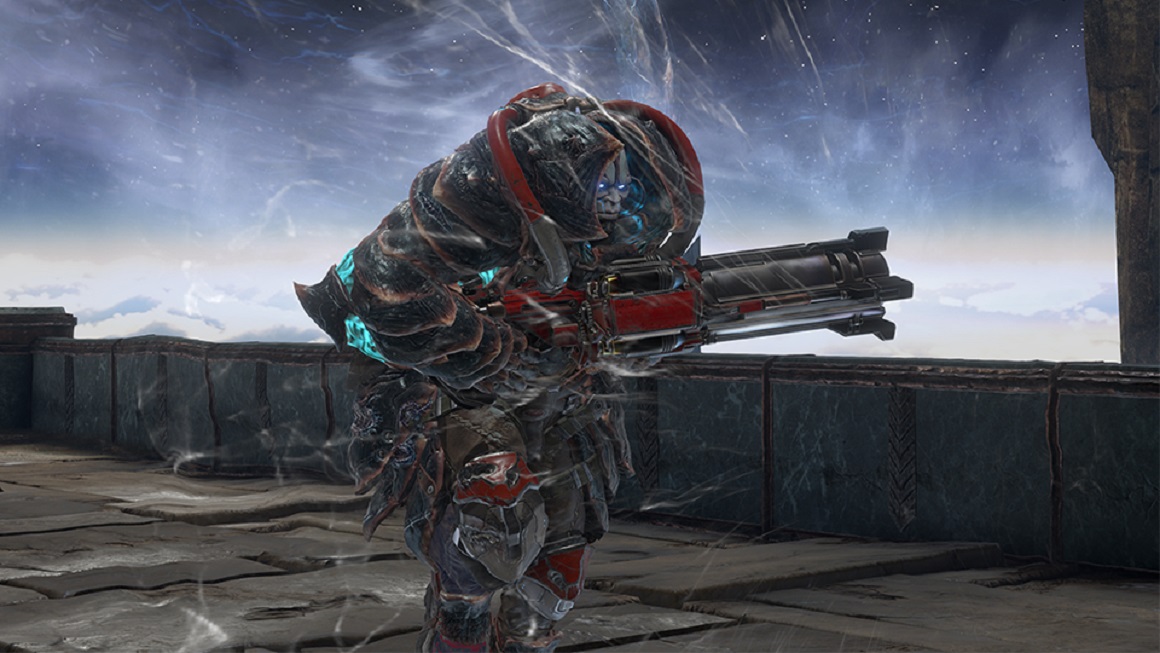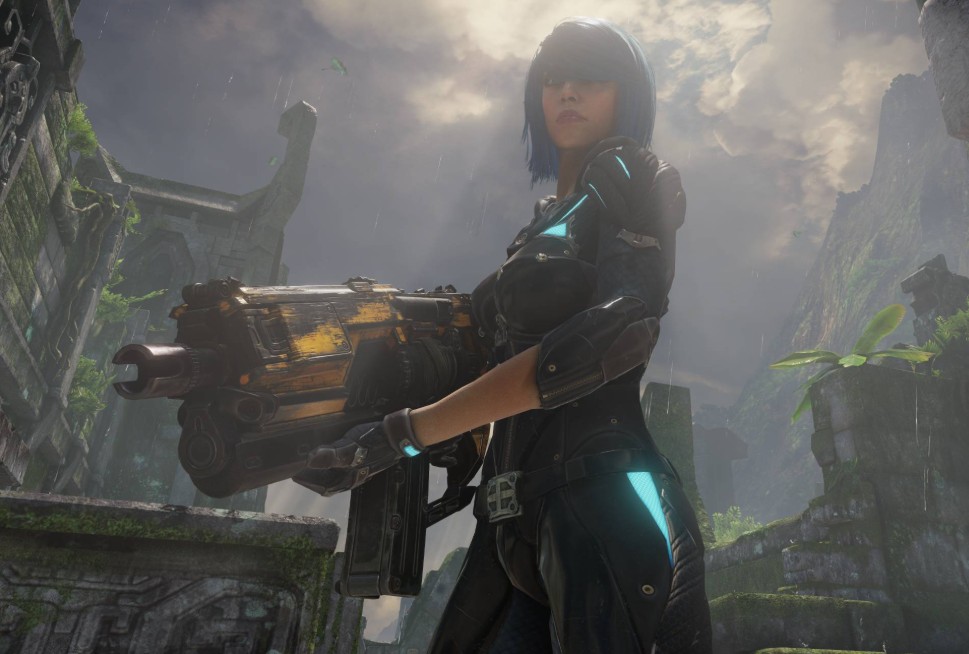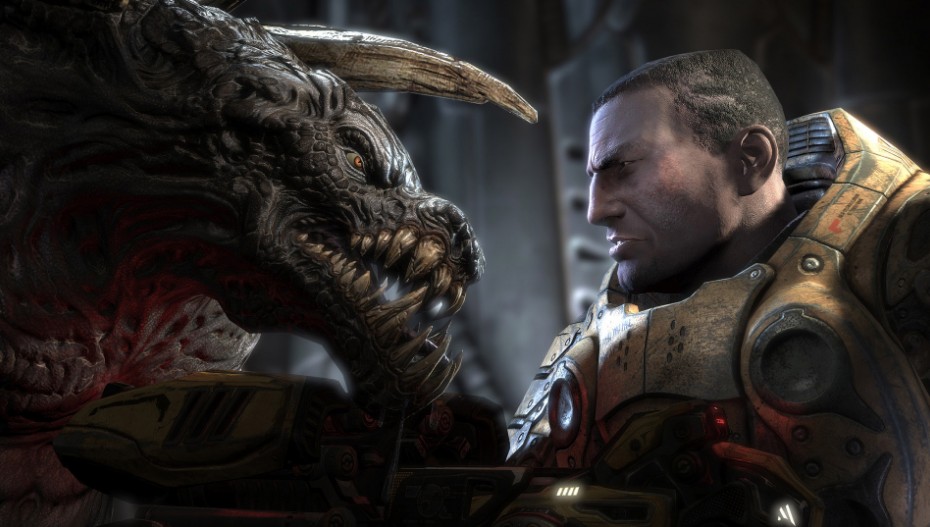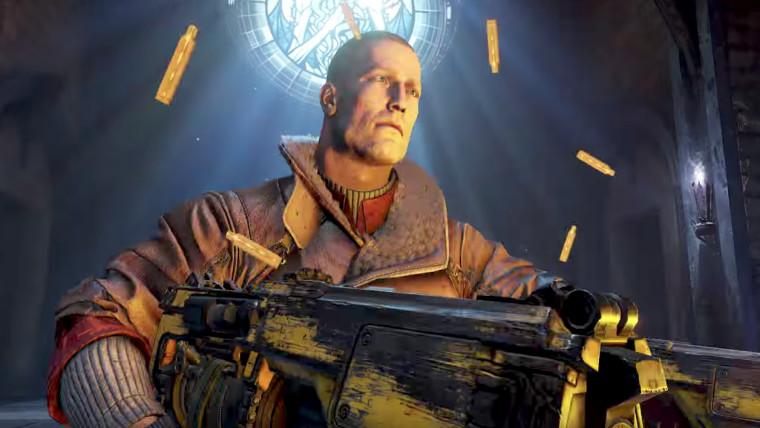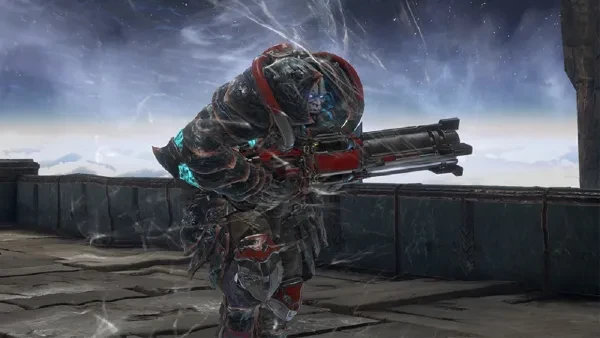
Updated:
14 Nov 2018
The Best Settings in Quake Champions
In a game like Quake Champions, every moment counts. Whether it’s a careful jump around level geometry or the flick of your crosshair as you fire a rocket at some airborne sap, Quake is full of moments in which loss of control is deadly. Having a steady framerate and good control over your movement is vital, and it’s important that your client is running as smoothly as possible. In this guide, I’ll show you how to tweak your game to optimize your personal and mechanical performance.
Disable auto-swap weapon
- When enabled, this setting makes it so that when you step over a weapon pickup, you automatically switch to the weapon you grabbed. This should be disabled if you plan to get better, since it’s important to learn proper weapon swapping, and you might accidentally equip a weapon in the middle of a fight that you didn’t want.
- This setting is under “game” in the settings menu, in the top left section.
- When you get stuck in a firefight, you want control over the weapon you have equipped, so that you aren’t suddenly using a rocket launcher to try and finish off someone when a lightning gun or shotgun would be far more useful.
Speedometer
- This setting simply shows how fast your character is moving. If you are trying to learn things like strafe jumping, this is a pretty useful tool, since it will demonstrate the rate you should turn your mouse to get the biggest speed increase.
- This setting sits in the “HUD” section of the settings menu, under the “crosshair” heading.
- Having a speedometer keeps your movement relevant so that you always remember to keep your speed high as you make the rounds on the map looking for enemies and pickups.
Change your ability key
- By default, your ability is bound to “F.” However, this means that to use your ability, you’ll need to take your finger off the D key, which can get you killed if you need to focus on movement.
- In the “control” section of the settings menu, the binding for “use ability” is on the right side. I’d recommend changing it to another key you have easy access to, like something on the side of your mouse, or something nearer the spacebar.
- Losing access to the button for strafing right sounds minor, but when you are frantically using your best footwork to avoid being shredded by a lightning gun, you’ll be glad that using your ability won’t compromise you.
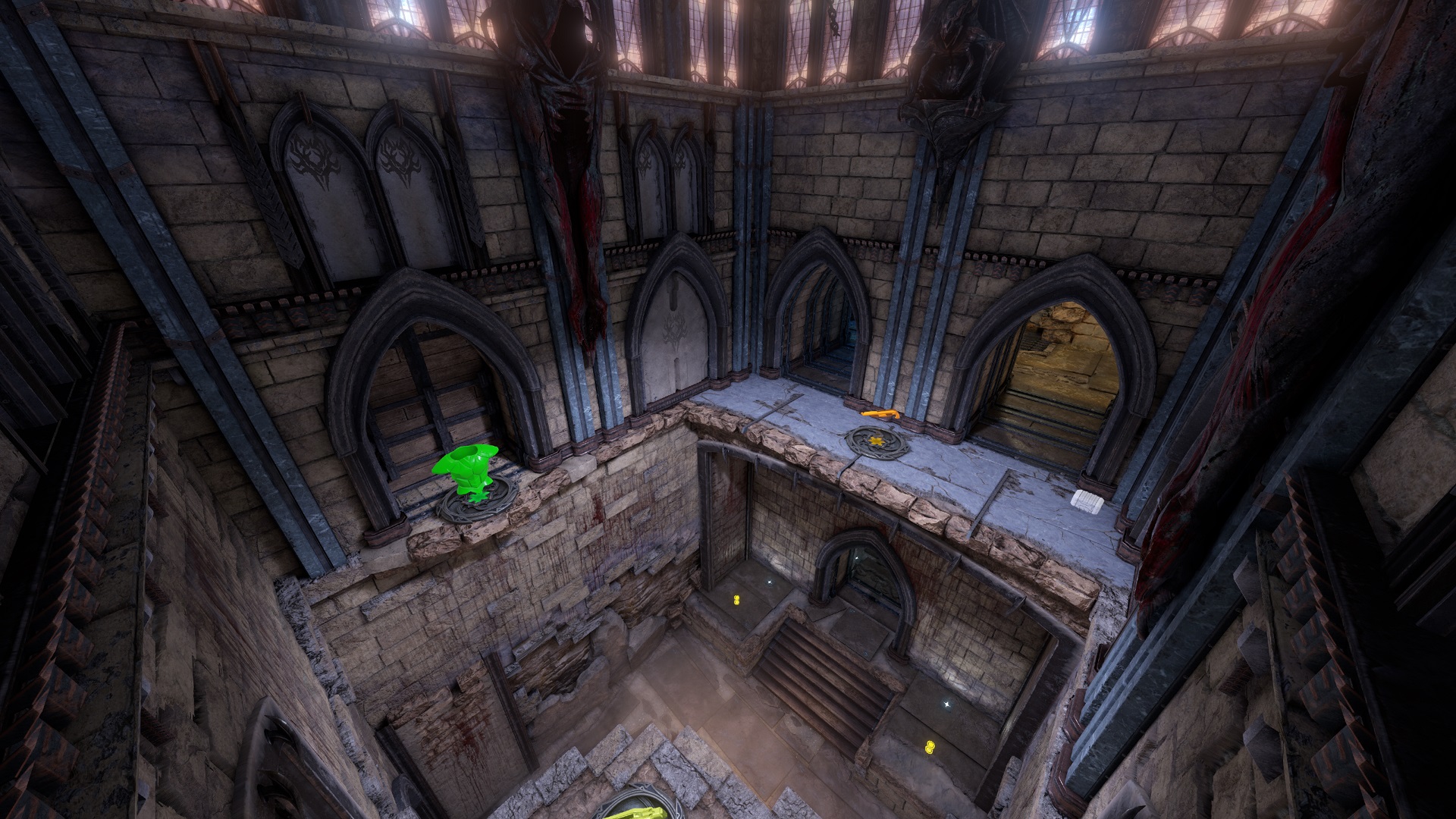
This is a room you will usually spend around 3 seconds in at a time. You probably won't notice any detail loss.
Full screen
- If you’re like me, you probably have a lot of games set to “borderless full screen” to make alt+tabbing easier. However, if you can stand it, you should turn this off for best performance.
- This is near the top of the video settings menu.
- Unfortunately, borderless full screen creates a small amount of input lag, which is a terrible thing to have in a game as fast as Quake.
Disable v-sync
- V-sync helps your game’s refresh rate match your monitor’s rate. While having this enabled can reduce screen tearing, it should be turned off if performance is your goal.
- This is under the video settings, on the right side.
- Just like your full screen settings, having v-sync enabled can create input lag.
Lower lighting quality
- This can be turned down to medium already without affecting the visual quality of the game very much, but turning it to low you’ll get a noticeable performance boost. This most likely comes from dynamic shadows being disabled on low.
- This setting is in the lower half of the video options.
- Turning this down will give you a better framerate, which is obviously desirable; if you are dropping below a steady 60 fps, that needs to be fixed.
Lower effects quality
- This setting will greatly affect performance, but you will see some serious changes to the visuals. Things like light shafts and volumetric fog rendering will be turned off if this is set to low, but that will come with a huge fps boost.
- This setting is under video options.
- This is one of the best ways to improve your framerate.
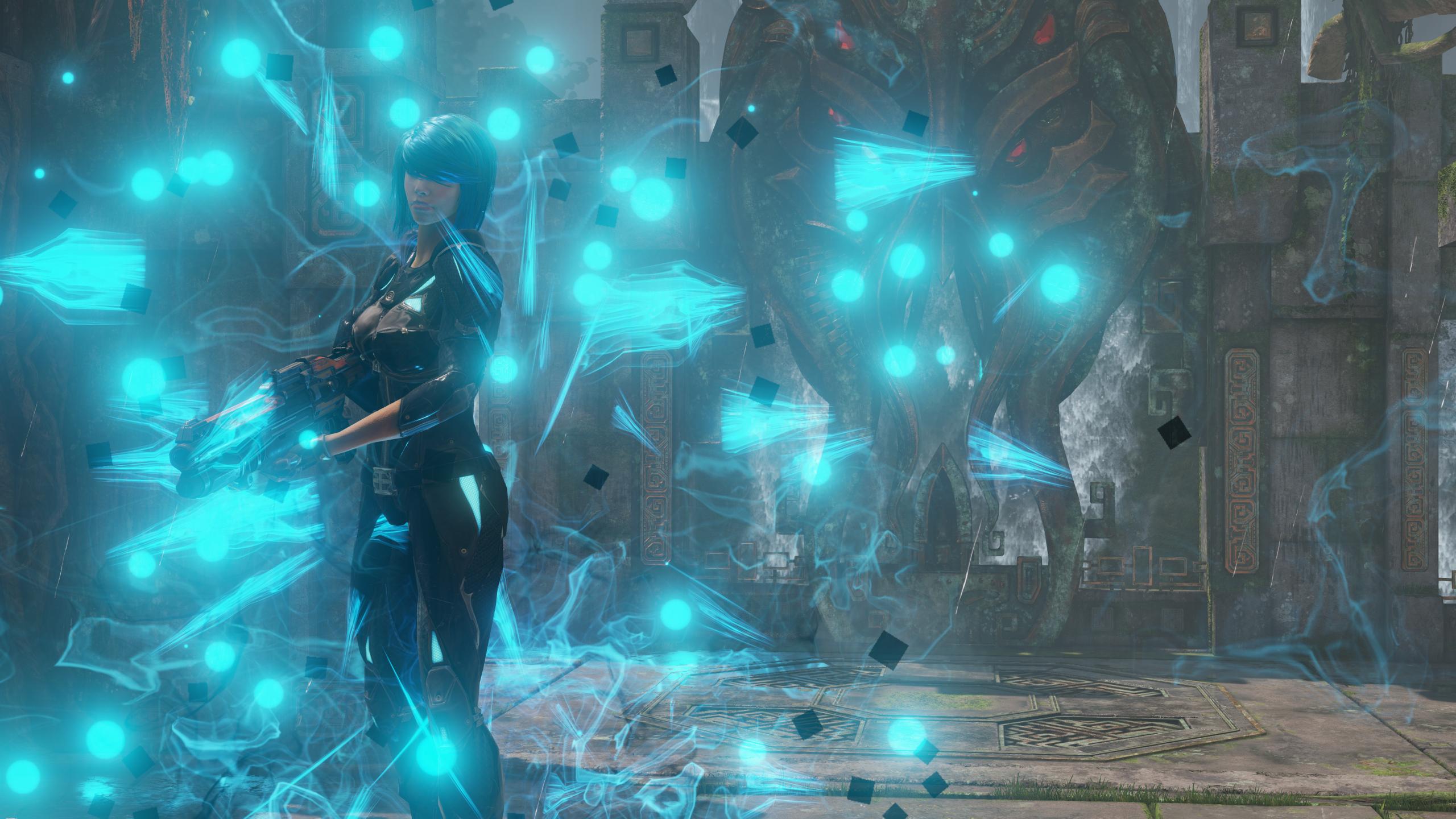
As you can see, some of the effects are overkill.
Lower Detail Settings
- This setting probably won’t bring your performance to whole new levels, but some maps in Quake champions rely on what this setting controls. Turning it off will boost your performance noticeably on more open maps like Burial Chamber.
- This setting is under video settings, in the same section as the previous two tips mentioned.
- The tessellation that this setting disables on those problem maps will remove the chance of inexplicable slowdowns in those locations.
Lower Post-Processing
- The quality of your image won’t change very much from ultra to medium, but turning this to low will disable things like ambient occlusion and depth of field. I’ve never really liked depth of field, but you may not like the way the game looks without AO.
- This is under the video options.
- You’ll probably get around 10 extra fps with this set to Low, which is always a nice bump.
FOV setting
- The type of tweaking you’ll do with this setting depends a lot on your hardware. If you have a good GPU and CPU, this can be turned up higher, but if you are playing on older hardware you will want to turn this as low as is comfortable.
- This setting is on the top right of the video options.
- Having a high FOV makes you able to see more on the screen, which can be pretty useful, but by rendering more objects at once, the performance hit might be too great to be worth it.
Resolution Scaling
- This setting is able to increase your performance without having to make the game run at a non-native resolution. It will make the game look more jagged and blurry, but it might be just what you need if minor graphical tweaks aren’t doing the trick.
- This setting is on the top left of the video options.
- By turning this down, you’ll see an all-around increase in performance at the cost of more and more visual crispness.
Sound effects volume
- This tip is a little more involved, since you’ll need to turn down your other types of volume sliders for it to work. Basically, you’ll want to turn your sound effects slider to the max, and reduce the other sliders, especially music.
- These sliders are all in the audio options.
- Since a lot of fights in duels and 2v2 scenarios are won by preparedness, being able to hear your opponent’s footsteps is vital—having sound effects this prominent means you’ll be able to tell which direction they will be approaching from.
Disable Steam overlay
- The steam overlay can really affect performance in certain games, and Quake Champions is one of them. If you play on steam and use the overlay a lot while playing, you should probably look at other tweaks, but turning this off can give you less stuttering.
- Turning off the steam overlay is done by right-clicking Quake Champions in your steam library, going to “properties,” and unchecking the box that enables the steam overlay.
- If you have a weaker CPU, this will probably help with stuttering issues, which can seriously throw off your game.
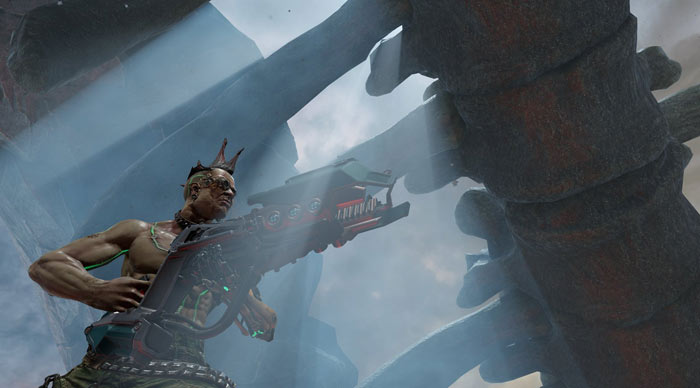
Those light shafts look nice, but they'll get you shot.
Mouse sensitivity
- If you are having trouble in Quake Champions, it’s easy to blame your inability to aim properly, right? Well, contrary to what you might think, it’s probably a better idea to lower your mouse sensitivity if you feel like your aim is off.
- The slider to lower mouse sensitivity is under the “input” options.
- By lowering your mouse sensitivity, you’ll give your poor motor reflexes a break; instead of relying on extremely fine wrist movements, you can put more of your arm into a sudden flick of your crosshair, which you will find is easier to control with lowered sensitivity.
Mouse filtering
- Turn this off if you have a good mouse, or at least one you are comfortable with.
- This setting is under the “input” options.
- You want the inputs from your mouse into the game to be totally unfiltered so that your aim is as dependent on your own movements as possible.
You may also be interested in:
